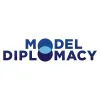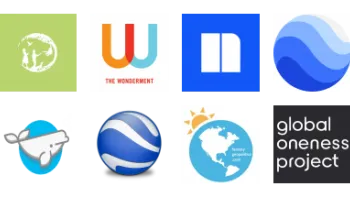Take a look inside 8 images
Model Diplomacy
Pros: A wealth of high-quality materials and assessments that support critical thinking, collaboration, and current events.
Cons: The materials and videos are tuned to advanced learners, lacking differentiation and requiring a lot of planning.
Bottom Line: This impressive program has ready-to-use and expert-vetted content that'll help advanced students engage meaningfully with foreign policy issues and processes.
Model Diplomacy will fit into social studies or ELA classes or after-school programs. It's a particularly good option for after Advanced Placement exams in May. The thoughtful structure, top-notch materials, pre-made assessments, and user-friendly website take a lot of the legwork out of running a foreign policy simulation.
Before diving into the PDFs of preparation materials, it'd be helpful to watch the short series of YouTube instructional videos and check out some of the teacher testimonials. These break down the Model Diplomacy process and help to make the whole thing seem less daunting. If there isn't one particular case best suited to your course, have students review the cases and vote on the one they'd like to do. Cases can be sorted by topic or region, so let students explore and build curiosity. Even if the class doesn't select their choice, students might explore their favorite scenario on their own.
In terms of the simulation itself, it'd be fun to begin with a mock electoral college (or even a mock election) simulation where students select the U.S. president (and maybe the student) they'll be advising in Model Diplomacy. Consider jigsawing the roles and completing the simulation in multiple small groups instead of one or two large groups (as recommended by the program). Also, while students will be required to research their roles (e.g., Secretary of Defense), it'd be beneficial for students to also investigate the actual person holding that role now and historically. Don't forget to ham it up by adding fun extras: official name tags and photos of current members, dressing up for the National Security Council meeting day, and hyping up the president's final decision.
Model Diplomacy is a web-based curriculum for foreign policy and diplomacy that, like well-known Model U.N. programs, uses role-play and a textual "simulation" to get students exploring and debating global issues. However, unlike Model U.N., Model Diplomacy has students take on the role of the U.S. National Security Council. The program is developed by the Council on Foreign Relations and provides high-quality content and preparation materials (ranging from videos to documents and research) to help students and instructors understand one of 16 cases, each based on a real-world scenario. Cases follow a basic flow: Students conduct research and write a memo, students participate in the role-play, and finally, they complete a wrap-up assessment. The program is adaptable to either a classroom or an extracurricular scenario, with cases ranging in topic, time span, difficulty level (to some extent), and whether they require group or individual research. Students will leave the simulation with a working understanding of the National Security Council, the process of making foreign policy, and an awareness of global issues.
The website functions similarly to Google Classroom: Students sign up and share a common dashboard with their instructor and peers. This dashboard organizes class materials, tracks progress, and features built-in assessment materials that can be modified and assigned online. Simulations (which can be toggled between high school and college level) include a case profile featuring an overview of the situation, key concepts, background information, issues to consider, and roles. The length of the program is customizable for class needs, ranging from several days to several weeks.
Model Diplomacy is a rigorous real-world simulation. Rather than being textbook- or test-driven, it's framed by actual events and guided by student inquiry, research, and discussion. It offers a strong model of collaborative learning while also supplementing the lack of current event instruction in some schools. Along the way, students hone skills that easily transfer to other settings, from researching and understanding a complex issue to preparing a proposal to presenting information to negotiating decisions.
The materials themselves are definitely aimed at advanced high school or college students. The teacher testimonials are largely from college, International Baccalaureate, or Advanced Placement instructors, which speaks to the rigor of the program. There's a lot of difficult reading, and the scenarios will stretch students' critical thinking and communication skills. While these materials might be intimidating to your students, with some scaffolding and extra preparation, they can be modified. This modification is on the teacher, however. While there are tons of options for pre-made assessments, there are no differentiated reading levels in the materials or even customized captions in the YouTube videos. Regardless of your class's level, take it step-by-step -- and there are a lot of steps -- so that students can walk away with the experience, awareness, and skills built into this strong, high-quality Model Diplomacy program.
















